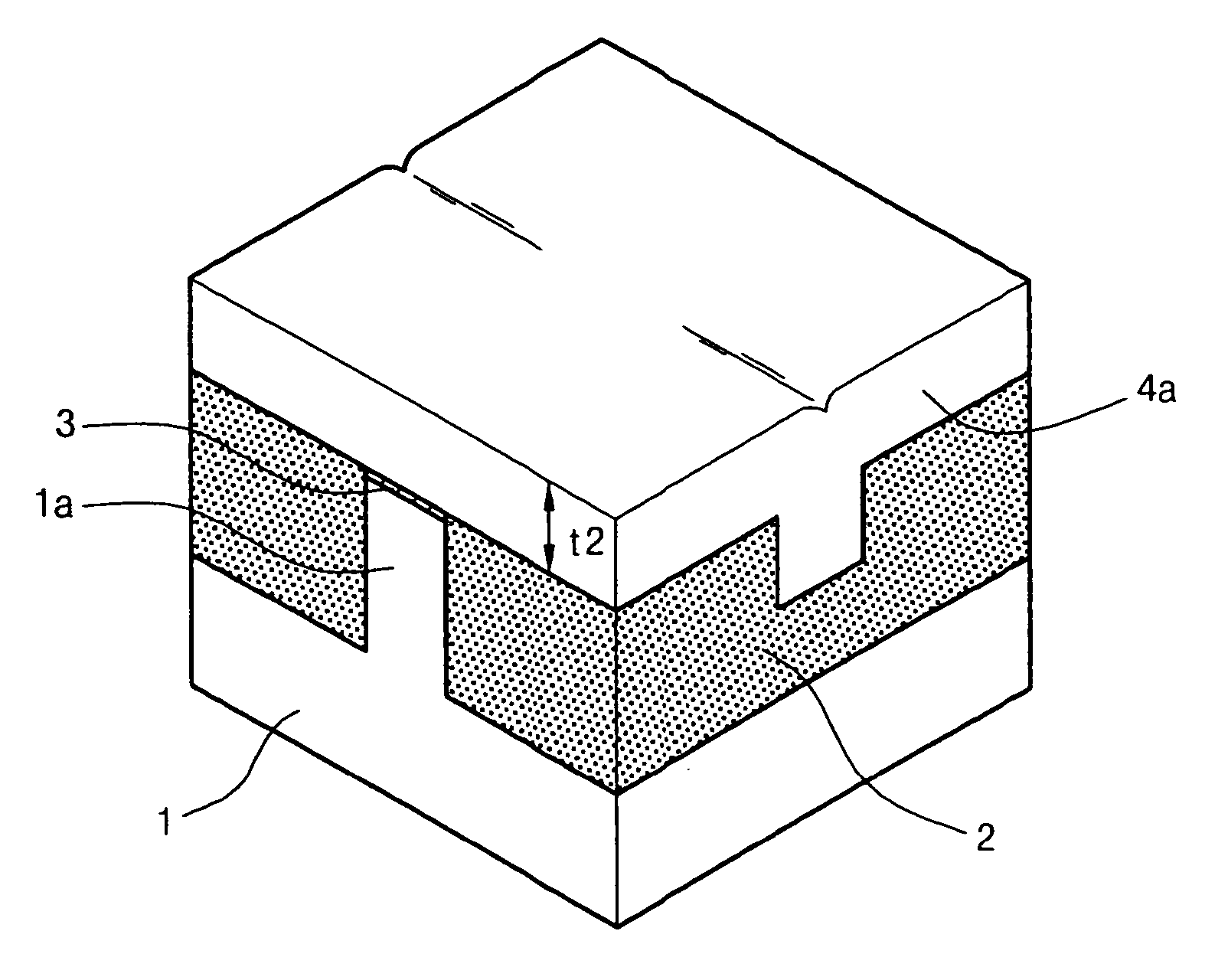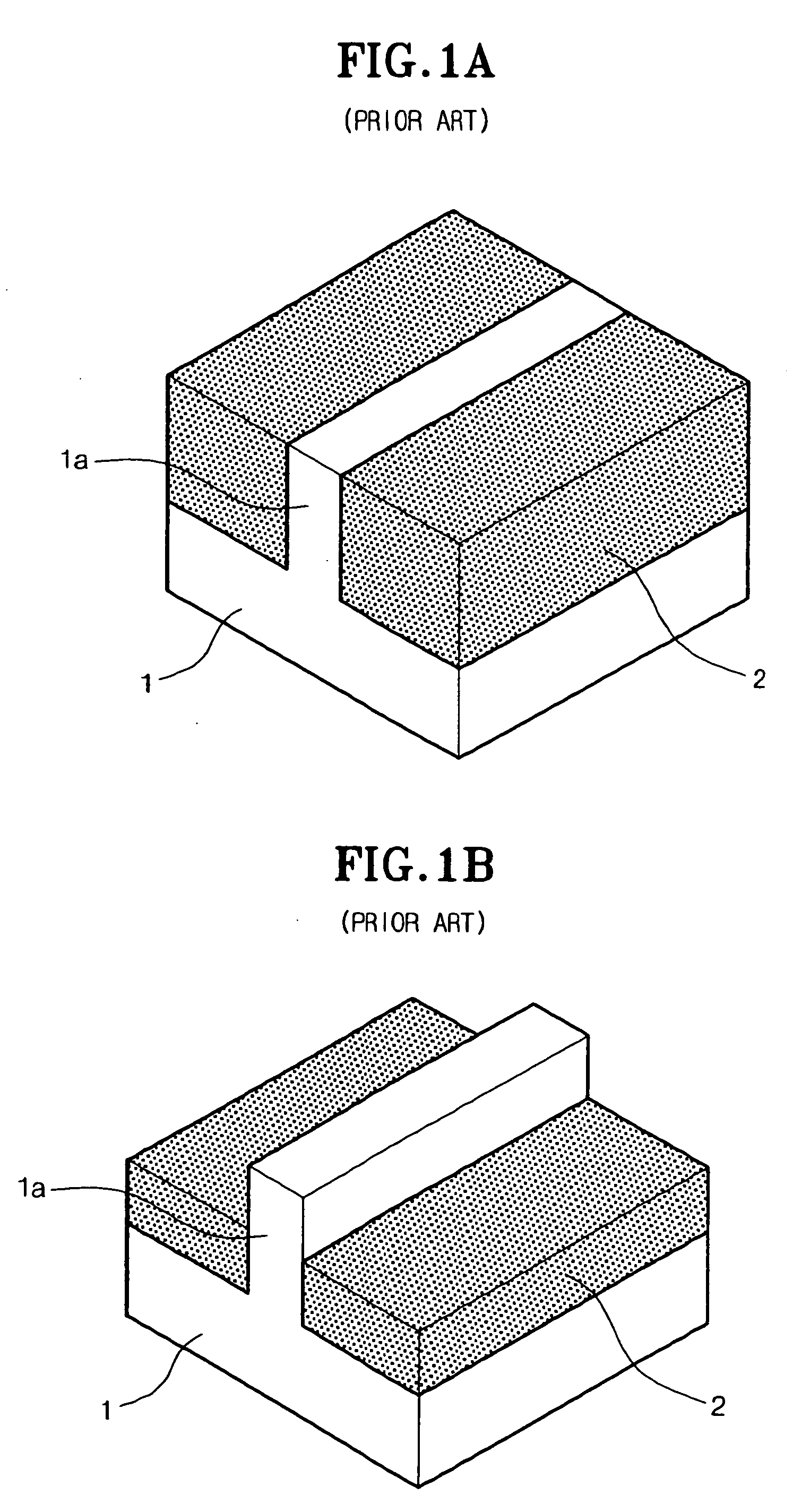Method of fabricating a transistor having a triple channel in a memory device
a memory device and triple channel technology, applied in the field of semiconductor devices, can solve the problems of undesirable increase of resistance of low-resistant gate electrodes, limitation of conventional two-dimensional planar channel structures to obtain target threshold voltage, and serious influence of threshold voltage on channel width
- Summary
- Abstract
- Description
- Claims
- Application Information
AI Technical Summary
Benefits of technology
Problems solved by technology
Method used
Image
Examples
first embodiment
[0050]FIGS. 5A and 5B illustrate the structure of the transistor fabricated by the process according to the present invention, wherein FIG. 5A is a cross-sectional view taken along line A-A′ shown in FIG. 4F, and FIG. 5B is a cross-sectional view taken along line B-B′ shown in FIG. 4F.
[0051] It can be understood from FIGS. 5A and 5B that the transistor according to the first embodiment of the present invention has the following structure. That is, the transistor includes the active area 1a vertically protruding from the predetermined portion of the semiconductor substrate 1 and the field oxide layer 2 is formed at both sides of the active area 1a. In addition, the recess g integrally formed with the channel area provided in the active area 1a is formed in the field oxide layer 2 in such a manner that the gate electrode passes through the recess g. The low-resistant gate electrode 4, which extends through the upper portion of the active area 1a while being overlapped with the channel...
second embodiment
[0063]FIGS. 7A to 7D illustrate the structure of the transistor fabricated according to the present invention, wherein FIG. 7A is a cross-sectional view taken along line A-A′ shown in FIG. 6G; FIG. 7B is a cross-sectional view taken along line A1-A1′ shown in FIG. 6G; FIG. 7C is a cross-sectional view taken along line B-B′ shown in FIG. 6G; and FIG. 7D is a cross-sectional view taken along line B1-B1′ shown in FIG. 6G.
[0064] It can be understood from FIGS. 7A to 7D that the transistor according to the second embodiment of the present invention has the following structure. That is, the transistor includes the active area 1a vertically protruding from the predetermined portion of the semiconductor substrate 1 and the field oxide layer 2 is formed at both sides of the active area 1a. In addition, the first recess g1 having the depth d1 is formed in channel area of the active area 1a. Accordingly, the height Hc (FIG. 7C) of the channel section of the active area 1a is lower than the hei...
PUM
 Login to View More
Login to View More Abstract
Description
Claims
Application Information
 Login to View More
Login to View More - R&D
- Intellectual Property
- Life Sciences
- Materials
- Tech Scout
- Unparalleled Data Quality
- Higher Quality Content
- 60% Fewer Hallucinations
Browse by: Latest US Patents, China's latest patents, Technical Efficacy Thesaurus, Application Domain, Technology Topic, Popular Technical Reports.
© 2025 PatSnap. All rights reserved.Legal|Privacy policy|Modern Slavery Act Transparency Statement|Sitemap|About US| Contact US: help@patsnap.com



